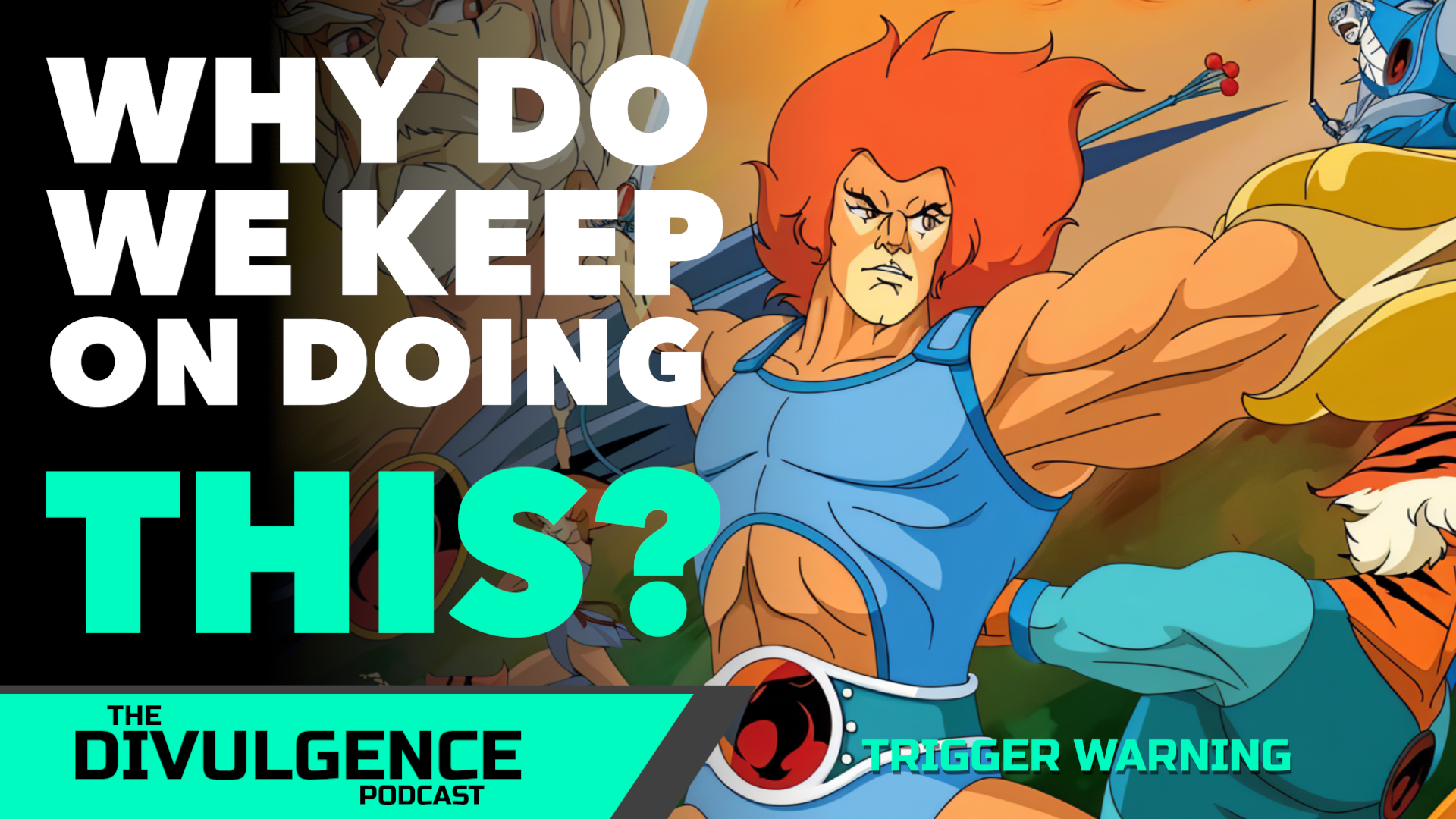Nostalgia has always had a unique power. The toys, games, fashion, music, and media of our past seem to carry a special glow, a magic that feels hard to replicate. As today’s creators re-imagine these old ideas for a younger generation, it begs the question: Can we improve on the originals, or should some things be left untouched? With modern technology, mass production, and changing tastes reshaping our cultural landscape, we need to explore whether the new can match up to the magic of the old—or if it falls short. Let’s dive into the past, the present, and the future of our trends, examining if our culture has become more disposable or if our present will someday earn the status of “classic.”
The Toys We Never Outgrew
The resurgence of ’80s and ’90s toys like Transformers, My Little Pony, and Teenage Mutant Ninja Turtles has been a cash cow for toy companies. These classic brands have been reinvented repeatedly, with updated designs, TV shows, and movies. But are they really “better” now? The newer versions come with slicker graphics, more articulated figures, and expanded backstories, but they often lack the charm of the original toys.
Many collectors argue that today’s toys, while visually impressive, don’t feel as durable or meaningful as their older counterparts. The material quality has shifted from sturdy plastic and metal to lightweight, cheaper alternatives, sometimes leaving older fans feeling that the newer products prioritize cost over quality. But then again, the re-imagining of these toys brings them into the current cultural moment, making them relatable to today’s kids in a way the original designs might not have been.
Take the case of Masters of the Universe. The ’80s series introduced children to a magical world of swords, sorcery, and power-packed action figures. In recent years, reboots like He-Man and the Masters of the Universe on Netflix have re-imagined the classic with a sleeker look and more sophisticated animation. While it brings the franchise to a modern audience, critics argue that it loses the raw, slightly campy charm of the original. Are these adaptations improving on the past or just rewriting it for a different generation?
Fashion: From Iconic to Disposable?
Fashion trends, like toys, are constantly being revived. Vintage styles like ‘90s grunge, ‘80s neon, and ‘70s boho are back in rotation. Yet, while the look may feel familiar, the quality of clothing has changed significantly. Cheap, mass-produced garments from fast fashion giants dominate the market, and while they replicate the styles, they don’t match the quality of the materials from past decades.
In the 1950s and ’60s, a dress or suit was an investment. Clothes were well-made, built to last, and tailored to fit. Fast forward to today, and clothes are often bought, worn a few times, and discarded. The fashion industry’s emphasis on speed and low cost leads to declining quality. Some would say that modern trends aren’t built to last because they’re not meant to—today’s fashion is disposable, easily forgotten once the season ends.
While it’s great that more people can afford trendy clothes, this shift has also created an era of “throwaway fashion.” How many iconic looks from the last decade will be considered classics in 20 years? Will anyone remember the Instagrammable trends that seem to come and go faster than the blink of an eye? Or is there still room for quality craftsmanship and timeless style in the age of fast fashion?
Music: Is There Anything New Under the Sun?
Music has evolved in ways that seem revolutionary. Technology lets anyone with a laptop produce songs and share them with the world. Yet, if you listen closely to modern tracks, you might notice echoes of the past. Sampling is widespread, with hooks from the ’70s, ’80s, and ’90s cropping up in modern pop hits.
The influence of past genres is unmistakable. From the synth-heavy sound of today’s pop to the raw guitar riffs in modern rock, much of what we hear today borrows heavily from what came before. It raises the question: Has all the music already been made? If new artists are just rehashing old ideas, can we say the industry is truly innovating, or is it stuck in a loop?
Compare this to past decades when movements like punk rock or hip-hop emerged from nowhere, disrupting the status quo and carving out entirely new musical landscapes. Today’s “new” genres, like hyperpop or bedroom pop, still feel largely derivative of the past. Is this the result of a saturated music market where it’s nearly impossible to create something truly new, or has the sheer volume of music made originality an outdated concept?
TV Shows and Movies: Should They Stay in the Past?
Hollywood’s habit of rebooting and remaking classic TV shows and movies is nothing new. But it seems like we’re stuck in an endless cycle of revivals. **Thundercats** is a perfect example. The original 1985 series was beloved for its adventurous spirit and imaginative world. In 2011, a darker, more serious reboot emerged, only to be canceled after one season. Then, in 2019, a cartoonish and highly stylized version called *Thundercats Roar* premiered, which many fans criticized for “dumbing down” the series.
This trend of modernizing old shows to fit the tastes of today’s audiences often strips away the essence that made them special in the first place. It’s not just about better animation or cooler special effects; it’s about capturing a particular vibe that resonates on a deeper level. The same goes for movies. While some remakes, like *Blade Runner 2049*, manage to capture the spirit of the original while adding a fresh perspective, others feel like hollow imitations.
Does this mean older shows and movies should be left alone? Or is there a way to respectfully adapt them for modern times without losing their soul? It’s worth considering if some classics should be appreciated for what they were instead of trying to force them into today’s entertainment mold.
Video Games: Are They Actually Getting Better?
The gaming industry has made huge leaps in graphics, processing power, and storytelling over the last few decades. Modern games like *The Witcher 3* and *Red Dead Redemption 2* feature photorealistic graphics and sprawling open worlds that would have been unimaginable in the ’80s and ’90s. But does better technology make for a better gaming experience?
Many gamers would argue that classic games like **Super Mario Bros.**, **The Legend of Zelda**, or **Sonic the Hedgehog** offer a simplicity and charm that’s missing from today’s games. The straightforward controls and pure fun of these titles evoke a sense of magic that modern games struggle to replicate. Despite all the advancements, some of the most popular games today—like *Minecraft* or *Stardew Valley*—embrace a simpler, retro style. Could it be that the essence of gaming isn’t just about high-resolution graphics, but about the emotional connection a player feels while immersed in the game?
There’s also the issue of micro-transactions and downloadable content (DLC). In the past, you bought a game, and that was it; today, many games are built with monetization in mind, leading to accusations that modern titles prioritize profit over playability. Is the magic of gaming being lost to a focus on realism and revenue?
Are We Living in a Disposable Culture?
Perhaps the biggest question is whether our current trends will ever achieve the same iconic status as those from decades past. Are today’s cultural touchstones destined to become future classics, or will they fade away as quickly as they appeared?
There’s a case to be made that we are indeed living in a more disposable culture. With so much content available at our fingertips, everything becomes more forgettable. The endless cycle of binge-watching TV shows, scrolling through TikTok videos, or streaming Spotify playlists can make it hard for any one piece of media to stand out. In previous decades, trends lasted longer because there was simply less to choose from, and what did exist had time to become iconic. Now, new trends are constantly replacing old ones, making it challenging for anything to feel truly timeless.
This shift is most evident in fashion and technology, where products are designed to be replaced rather than repaired. In music, artists churn out hits rapidly to stay relevant, while in movies, franchises keep rebooting to cash in on nostalgia. Is this making culture itself more temporary? Or will some of today’s trends eventually rise above the noise and be remembered as classics?
The Future: Will Nostalgia Still Matter?
Nostalgia will likely continue to influence our culture for years to come. It’s a comforting link to simpler times, even if those times weren’t always as perfect as we remember. But as we move forward, it’s essential to ask whether we’re creating the next wave of cultural icons or just endlessly recycling what came before.
Will the next generation look back on today’s remakes and say, “That was the golden age,” or will they see them as hollow attempts to recreate something that was already great? As technology advances and society changes, so will our tastes. And perhaps, in the future, some of today’s trends will be seen as classics too—just in ways we can’t quite imagine yet.
The magic of cultural trends lies not just in their originality, but in how they make us feel. While it’s tempting to see nostalgia as a standard against which all modern trends should be judged, perhaps it’s more about how each generation takes inspiration from the past and makes it their own. Whether we’re talking about toys, games, fashion, or any other part of our culture, the journey is never about staying the same but always about finding new ways to capture that ever-elusive magic.




